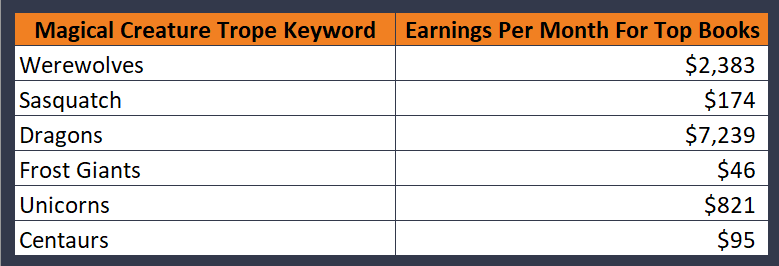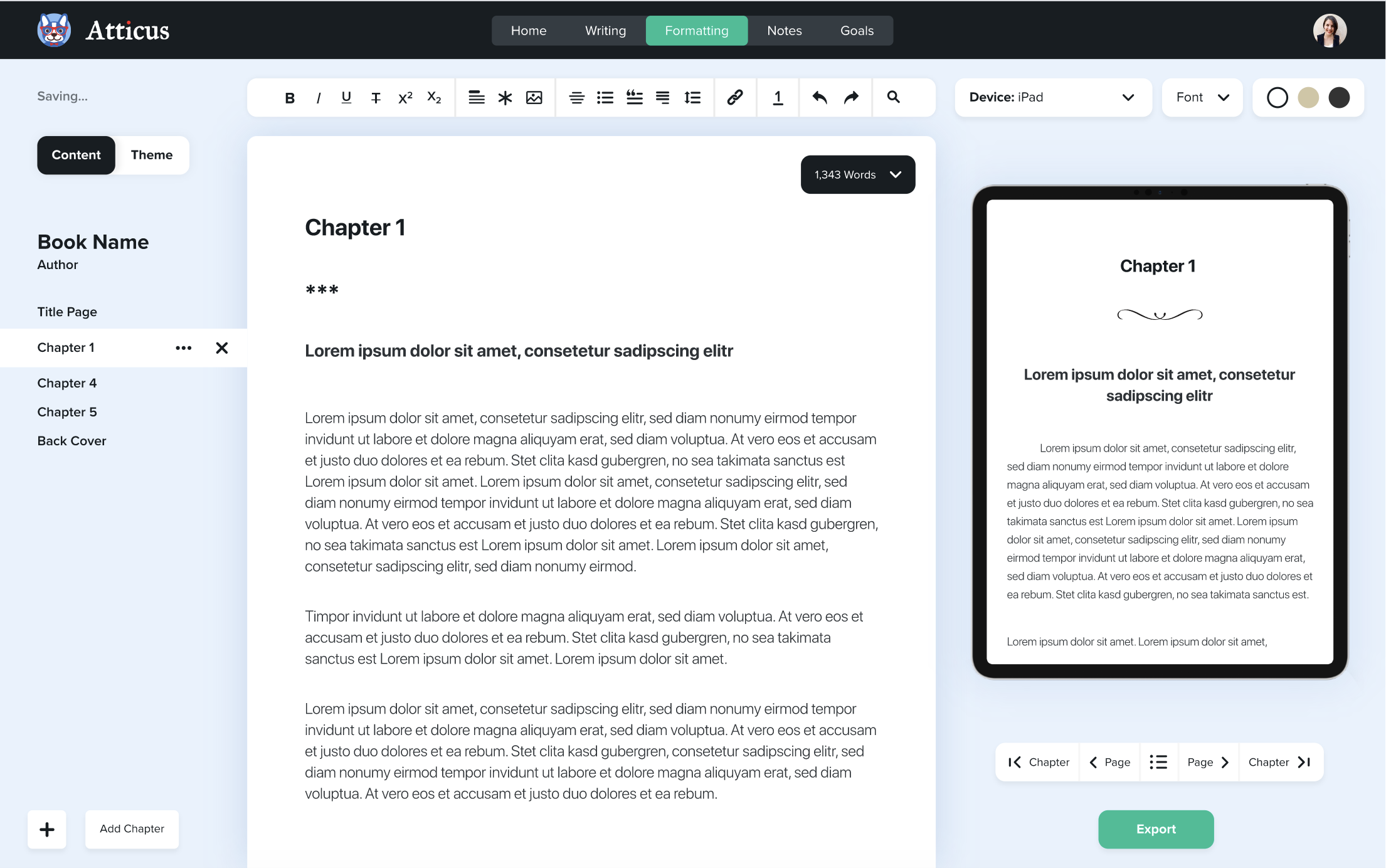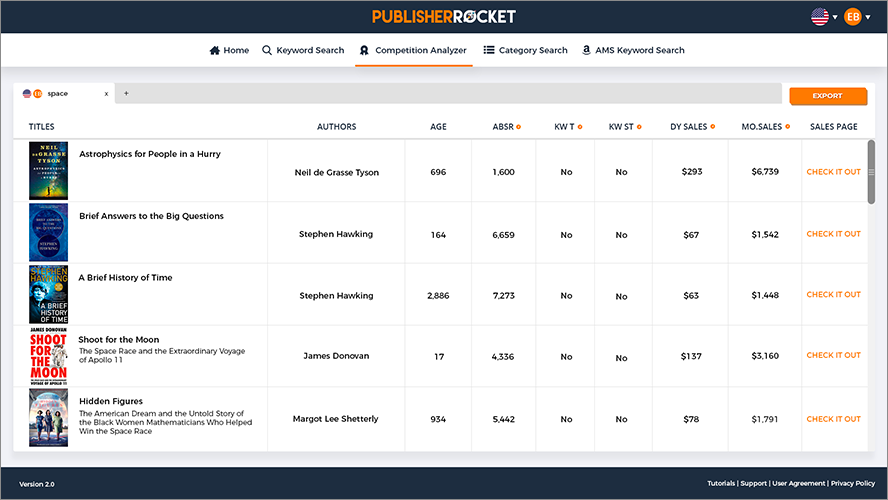Whether we realize it or not, most of us look for certain tropes when picking our next book.
If a friend recommends a novel, we usually ask, “What’s it about?” And nine times out of ten, the answer includes not just the genre, but the tropes.
Enemies to lovers. Found family. The chosen one. These are the patterns we recognize and the hooks that pull us in.
Every reader has a few go-to tropes they enjoy. Some people love variety. Others know what they like and stick with it.
As a writer, it’s smart to get familiar with the most common tropes in your genre (and even some outside of it). The best way to start? Dig into the Amazon categories you're aiming for and study what tropes show up in those books.
This list will help you do that. It’s a roundup of the tropes readers love and expect, organized so you can spot the ones that might fit your own story.
- What a trope is.
- Whether you should use tropes in your fiction.
- The most common tropes across fiction.
Table of contents
Literary Tropes vs Genre Tropes
Before we dive into the list, let’s clear up one thing.
When I say “tropes,” I’m not talking about literary devices like irony, metaphor, or hyperbole. Those are important, sure, but that’s not what we’re focused on here.
We’re talking about genre tropes. These are the kind of patterns and story elements readers recognize and gravitate toward.
A trope might be a type of character, a familiar plot twist, a theme, or even a setup like “a small town with a big secret.” Whether you realize it or not, you’re probably already using tropes in your writing.
We all do. That’s why it helps to study them.
The more you understand which tropes show up in your genre (and why readers love them), the more intentionally you can use them in your own stories. You can lean into them, twist them, or subvert them, but at least you’ll be doing it on purpose.
Format Beautiful Professional Books
Easy to use, and and full of amazing features, you can quickly turn your book into a professional book.
Check It OutAre Tropes Good or Bad?
Some people like to bash tropes, as if using one means your story is lazy or predictable. But the truth is, tropes exist for a reason. Readers recognize them. They expect them. And when used well, they love them.
That doesn’t mean you should grab the first trope you spot and plug it into your story without a second thought. As a writer, your job is to strike a balance. You want your story to feel familiar enough to fit the genre, but original enough to stand out.
Tropes evolve over time. They shift with reader expectations. And that evolution happens because writers take the old and give it a fresh spin (or invent something new that becomes the next popular trope).
So as you read through the list below, don’t think of these as “good” or “bad.” It’s not the trope itself that matters. It’s what you do with it.
And fair warning: romance has a lot of tropes. Let’s jump in.
How Do Tropes Affect Book Sales?
Tropes aren’t just tools for writing. They’re also powerful tools for marketing.
Many readers start with a trope in mind when searching for their next book. They head to Amazon and type in phrases like “enemies to lovers,” “found family,” or “twist ending.” If your book lines up with one of those tropes, you’ve got a better shot at showing up in search — and getting that click.
That’s why it’s smart to do a little research before you start writing. Some tropes have massive built-in audiences, while others are less in demand. If you know what readers are actively looking for, you can use that to guide everything from your plot and title to your cover and keywords.
This applies to every genre. For example, if you’re writing a fantasy novel with magical creatures, don’t just settle for “magical creatures” as your keyword. Look at which specific ones — dragons, fae, phoenixes — are actually popular on Amazon. Some perform much better than others, and the data can help you choose which direction to lean.

Data provided by Publisher Rocket
Romance authors can do the same thing by checking which trope keywords lead to the highest-earning books. “Marriage of convenience” might be outperforming “friends to lovers” this month. That’s good to know before you hit publish.

Data provided by Publisher Rocket
So yes, tropes matter. Not just for the story itself, but for discoverability. Find the right one, frame it well, and your book has a better chance of standing out.
Complete List of Book Tropes
While I’ve grouped these tropes by genre, don’t take that as a hard rule.
Many tropes work across multiple genres. Just because something shows up under romance or thriller doesn’t mean it can’t be used in sci-fi or fantasy. Some of the most successful books take familiar tropes and twist them in unexpected ways.
That’s the sweet spot. Giving readers something that feels both familiar and fresh.
Mixing tropes from different genres is a great way to do that. Just be sure to research what your audience expects. Certain tropes are basically required. For example, if you're writing romance, readers expect a happily ever after (or at least a happy-for-now).
Use the list below as a reference. Not a rulebook.
Action & Adventure Tropes
Action and Adventure tropes can also be found in Fantasy, Thriller, Mystery, and Science Fiction stories.
- Hidden Treasure
- Puzzle Solving
- Exotic Locations
- “Unbreakable” Codes – That are broken by the protagonist.
- Ancient Secrets
- High Action – The action is what readers come for, so it’s important to have plenty of it. From explosions and gunfights to car chases and hand-to-hand combat.
- The Larger-Than-Life Threat – A city, a country, or the whole world will blow up if the protagonist fails.
- Military Exploits – Military thrillers are often found in both action/adventure and thriller genres. Often, these novels follow a small group of professional soldiers.
- The Love Interest – There almost always is one, and it usually helps drive the plot.
- Linear Plotlines
- Black-and-White Morality
- The MacGuffin – An object that acts as a plot device to move the story along. The hero must find the MacGuffin(s) before the villain does in order to save the world.
- The Double-Cross – A trusted ally or side character turns out to be working for the enemy.
- Bad Guys Who Can't Aim – No matter how many shots they fire at the hero, he never gets hit.
Children's Book Tropes
Children's books aim to impart a lesson to the little readers. But there are some common tropes that work well in these shorter stories.
- Talking Animals
- The Power of Friendship
- Appreciating Our Differences – Anything from race to preferences to religious differences.
- The Defective Animal – A hurt or deformed animal that needs to be cared for.
- Dealing With Adversity – Often, the protagonist fails twice and then gets it right on the third attempt.
- Learning a New Skill
- Learning About Family – Usually a new sibling.
- Learning to Share
- Loyalty
- Dedication
- Dealing With Anger – Or any other powerful emotion.
- Going to School
- The Power of Imagination
- The Power of Teamwork
- Compassion
- Courage
- Bravery
- Honesty
- Growing Up
- Dealing With Loss
Contemporary Fiction
Contemporary fiction stories don't fit nicely into popular fiction genres. This is largely because the tropes are often hard to identify (or nonexistent). But there are a few you'll often see in these literary fiction books.
- Set in the Modern Day
- Conflict Comes from Interpersonal Relationships
- Family Drama
- Coming of Age
- Dealing with Mental Illness, Addiction, Sexual Orientation, and/or Abuse
- Unresolved Endings Are Common
- Lack of Common Plot Structure
- No Otherworldly Elements
- A Death in the Family
Fantasy
If you've watched any of the Lord of the Rings movies or read any of the books, you can probably name a few common Fantasy tropes.
- The Hero's Journey – A plot structure popularized by Joseph Campbell that's often used in Fantasy stories. Sometimes called a Quest.
- Side Quests – While on the way to accomplish their main goal, the characters get sidetracked or split up to accomplish smaller goals so they can then tackle their larger goal.
- Medieval-Adjacent Settling – Without all the magic, it could be Europe during the middle ages.
- The Chosen One – A protagonist that's prophesied to be the savior of Earth (or whatever fictional world the story is set on).
- The Evil One – A larger-than-life villain that usually has immense supernatural powers. Often a wizard, witch, or warlock.
- The Mentor – An older character who helps the protagonist along on his or her journey. Sometimes a good wizard, witch, or warlock.
- Powerful Artifacts – Swords, talismans, staffs, rings, etc. These items are powerful, and everyone wants them.
- Magical Creatures
- Epic Storylines With Lots of Characters – This is often expected, especially in high fantasy.
- High Stakes (Good vs Evil)
- Heir to the Throne – The character may not want the throne or even know that he/she is the heir. But by the end of the story, they usually take their rightful place as a benevolent ruler.
- Best of the Best – Whether the protagonist or antagonist (or both), these characters prove themselves to be the best at whatever skills they have.
- Unlikely Allies – When the hero is forced to trust one of their enemies to save the day.
- The Reluctant Hero – When the protagonist just wants to be left alone but is pulled into the adventure, anyway.
- Rescued by the Cavalry – Sometimes, this is an actual army riding over the ridge. Other times, it’s an ally showing up at just the right time.
- The Damsel in Distress – Not as popular these days, but still used on occasion.
- The Training Sequence – Where the reluctant hero learns to fight, harness magic, use his new knowledge, or all of the above.
- Paying the Price – Victory doesn’t come easily for the protagonist in my fantasy stories. There’s usually a price to pay.
Historical Fiction
Historical fiction, in this case, is not primarily romance. That is, there can be a romance subplot, but it's not the main storyline. These are all pretty self-explanatory.
- War – Often set During World War II
- Set in Colonial America
- Combining Real and Fictional Events
- Including Historical Figures as Characters
- Religious Themes
- Social and Political Turmoil
- Dual Timeline – One in the past, one in the present.
- Traveling Long Distances – Like moving to the West Coast during the 18th century.
- What Life Was Like – Showing the everyday life of people in historical settings.
Horror
Horror books come in all shapes and sizes, but there are certain tropes that readers love (or love to hate). Here are some of the biggest ones.
- Mysterious Things Are Happening – And usually, people are dying because of them.
- Cursed Items – From books to dolls to religious trinkets, there's often something that's cursed.
- Monsters – There are plenty to choose from or you can invent your own.
- Aliens – Abductions, invasions, awakenings. It’s all rife with terror.
- Glowing Eyes – They usually appear in the darkness at a time of great tension.
- Humans Can be Evil – Not all monsters look gruesome. Some live next door.
- Bad Things Happen at Night – Rarely in the daytime.
- Paralyzed With Fear – When a character can’t move, speak, or scream.
- The Antichrist – Bad news for the world.
- Cults and Religious Extremists – Often trying to unleash demons or the Antichrist.
- Backing into Darkness – You can bet there’s something lurking there.
- Traumatic Past – May help the character deal with the traumatic present.
- Minority Character Dies First – Perhaps a good one to subvert.
- Severed Limbs – Usually found by other characters.
- Losing the Ability to Run – When a character trips at the exact wrong time.
- Easily Definable Characters – The mean jock, the promiscuous girl, the alcoholic cop, etc. Otherwise known as character archetypes.
- Karmic Retribution – In a lot of horror stories, karma is swift in taking out those who do evil.
- Deal With the Devil
- Creepy Settings – Abandoned places, graveyards, forests, etc.
- The Unhappy Ending – This is one of the few genres where you could possibly get away with killing your protagonist off (if done right).
- The World is Ending
- Defeated Monster Comes Back to Life – Right at the end of the book.
Literary
Although a broad category encompassing books that don't fit well into other genres, there are some common tropes in Literary Fiction.
- Flowery Writing Matters More Than Plot – Many readers seek these books out for a certain feeling or experience related to the writing itself rather than the plot.
- Childhood Memories – Dealing with childhood trauma is common in literary fiction.
- Set in a Small Town
- Major Characters Killed Off – There’s no guarantee of a happy ending in this broad genre. That means that even major characters can die.
- Dysfunctional Family
- Meandering Plot – Once again, plot isn’t a major concern. Many of these books end ambiguously or abruptly.
Mystery
A good mystery pulls the reader along, asking them to solve the case before the protagonist does. There are common tropes that most readers expect when they pick up a mystery.
- The Unlikable Victim – Common in cozy mysteries, the unlikable victim is someone who was an all-around jerk. But their killer still must be brought to justice. The problem is, everyone has a motive!
- The Red Herring – This is the character who we're led to believe is the killer, but it's a misdirection. This can also be a clue that points in the wrong direction.
- Close Quarters – Whether the setting is a train, a boat, or a mansion during a bad storm, it's common for all the suspects to be in close quarters while the detective tries to unravel the mystery.
- The Alibi – Just when the protagonist thought they had the killer, an airtight alibi comes to light.
- Outsmarting the Criminal – When the protagonist hatches a brilliant plan to get the criminal to confess.
- The Trophy – When the killer keeps evidence that turns out to be his/her undoing.
- The Protagonist is a Suspect – What happens when the detective (amateur or professional) is the number one suspect? Lots of tension, that's what.
- Righting Past Wrongs – It's common for the protagonist to take a case that directly or indirectly relates to a previous failure. They get a second chance to right their past wrong.
- The Dramatic Reveal – When a character holds back information for some reason until revealing it in the most dramatic fashion possible.
- A Detective with a Haunted Past
- Consulting a Criminal – When one criminal (usually already caught) is consulted to glean information to catch the protagonist.
- Amnesia – Your main character can't remember who they are or can't recall vital information pertaining to the case.
- Twist Ending – Many readers love a good twist ending at the end of a mystery.
Romance
With so many romance subgenres, there are plenty of popular tropes to choose from. Most romance novels have several of the following tropes in them.
- Happy Ending – The most popular and important romance trope on the list!
- The Love Triangle – Three characters, one choice, and some unavoidable hurt feelings. Love triangles make for plenty of tension.
- Forced Proximity – Two characters who find love when they're forced to spend time together.
- Forbidden Love – Romeo and Juliet, but without the tragic ending and made with the modern romance reader in mind.
- The Enemies to Lovers Trope – The characters start out hating each other. But true love prevails. (Often combined with the Forced Proximity trope).
- Fake Relationship – One character ropes another into posing as their partner – often to get a nagging relative off their back. But what starts out as pretend soon turns serious in this popular trope.
- The Other Woman/Man – Be careful with this one. No one likes a cheater, which is why there’s often some “legitimate” reason for being unfaithful to the partner.
- Incapable of Love – That character who has been hurt so bad they’ve given up on love. Until…
- Love Is the Answer – It doesn’t matter what the question is.
- The Pure and the Promiscuous – One character (often a female) is inexperienced in the ways of love. The other (often a male) is overly experienced. You know the rest. Perhaps a trope that’s antiquated and certainly problematic in today’s culture.
- Love at First Glimpse (Instalove) – The characters don’t need to get to know each other to see if they’re compatible. They fall in love without even talking. The rest of the story is usually a “will they won’t they” plotline.
- Marriage of Convenience – There's no love between this couple. At least, not at first. But as the two get to know each other, they soon discover the sparks.
- Unexpected Love Interest – While the protagonist goes on date after date with the wrong people, their friend is always there for support. Pretty soon, the main character realizes that the “friend” is the one they've loved all along.
- Fated Mates – In the paranormal romance genre, the fated mates trope is where two soulmates (one usually a shifter) find each other and things soon get steamy.
- The Misunderstanding – It’s not all sunshine and rainbows in romance stories. There needs to be a conflict that comes to a head near the end of the book. This conflict is often predicated on a simple misunderstanding. This is one trope that many romance readers feel is overused.
Science Fiction
Science fiction stories can take place in the not-too-distant future or a long time ago in a galaxy far away. No matter when and where the story is set, there are certain tropes that readers look for.
- Artificial Intelligence – Given the recent headlines, it's no surprise that this trope is still going strong. AI can be helpful or hurtful in the story, but it's a staple of many a sci-fi story.
- Dystopian – Totalitarian governments and post-apocalyptic hellscapes make the backdrop for many dystopian stories. Often, the story involves the protagonist toppling the oppressive system.
- Time Travel – Enough said.
- Space Travel – Humans aren't meant to live in space. It's dangerous. Lots can go wrong.
- Aliens – Like Artificial Intelligence, Aliens can be allies, enemies, or even main characters. First Contact is a sci-fi subgenre about humanity's first contact with aliens.
- Alternate Dimensions/Universes – Doesn't have to be done just with superheroes. 😉
- Nanotech – Little robots that do crazy things!
- Implants – Changes to human bodies that give strange abilities.
- Power and Technology – People want to use technology for evil, while others try to stop them and use it for good.
- End of Human Race – Unless the characters survive and procreate.
- The Ticking Clock – The sun will explode or the engines will fail or the asteroid will hit at a certain time.
- Downloading People – When the technology exists to have one’s consciousness downloaded.
- Body Switching – When characters can inhabit bodies other than their own.
- Army of Clones
- Destroying the Universe – When a malevolent being wants to kill everything.
- Dangers of Cryo Sleep – A lot can go wrong when you sleep for decades.
Thriller & Suspense
Thriller and suspense tropes are often found in action & adventure, mystery, science fiction, and even fantasy stories.
- Ticking Clock – There's often a race against time in thrillers that adds suspense.
- Troubled Protagonist – Often a character with a background in law enforcement or the military, the protagonist is flawed and deeply troubled. All he or she has is the case or the mission.
- The Unreliable Narrator – Most common in psychological suspense or thrillers, the unreliable narrator often lies to the reader or tells half-truths. This can help with the next trope on the list.
- The Twist Ending – A good twist ending is hard to pull off, but you can do it with a careful hand. It helps to have red herrings and an unreliable narrator.
- The Insurmountable Odds – Unlike mysteries, thrillers often make no mystery as to who the villain is. The tension comes in the seemingly impossible odds the main character faces. How will they ever defeat the antagonist? Will they die in the process?
- High Stakes – At the very least, the protagonist's life is at stake. To raise the tension, put other people's lives at stake. Lots of them.
- Exotic Locales – Not every thriller needs to be a globe-trotting adventure, but many of them are. The main character often has to go to well-known cities around the world to stop the villain.
- The Cliffhanger – Much of the time at the end of a chapter, but sometimes at the end of a book.
- Missing Children or Spouses
- Gaslighting – Often a theme in psychological suspense.
- The Stalker
- The Frame-Up – Often ties in with the protagonist being suspected of the crime.
- Crime in the Family – When someone close to the protagonist commits a crime.
Young Adult
Young Adult novels like Harry Potter or The Hunger Games use different genres and tropes to tell their stories. Still, there are some common tropes you'll often see in these books no matter what the genre.
- The Outsider – The protagonist is often an outsider, going against the grain and preferring to do things their own way.
- The First Love – Young love is a common theme in these novels. It can be a subplot or even the driving force of the novel.
- Love Is the Answer – It doesn’t matter what the question is.
- Incapable of Love – That character who has been hurt so badly they’ve given up on love. Until . . .
- Useless or Evil Adults – It's no surprise that books written about teenagers often portray adults as incompetent or evil. This trope may be overused and ripe for subverting the reader's expectations.
- The Chosen One – A protagonist that's prophesied to be the savior of Earth (or whatever fictional world the story is set on).
- Dark Family Secret – This trope can create tension and provide surprise.
- Discovering Special Powers – If the story is of a fantasy or paranormal type, this can happen to move the plot along.
- The Missing or Absent Parents – This trope is often about getting the adults out of the picture to increase tension and allow the main characters to deal with issues without the help of their parents.
Better Keywords & Categories Fast
See why over 47,000+ authors and publishing companies use and love Rocket to help them sell more books.
Get Publisher Rocket Now!A Complete List of Book Tropes: Conclusion
Tropes aren’t good or bad on their own. They’re tools. And like any tool, it all depends on how you use them.
Sure, some people roll their eyes at common tropes. But readers search for them. They get excited when they find a favorite. And they’ll avoid books that miss the mark.
That’s why it’s so important to read widely in your genre. Get to know the tropes your audience expects. Then decide how you want to use them (whether that means leaning in, adding a twist, or flipping them on their head).
A familiar trope with a fresh take can go a long way toward turning a casual browser into a fan.









